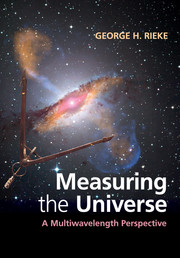Book contents
- Frontmatter
- Contents
- Preface
- 1 Radiometry, optics, statistics
- 2 Telescopes
- 3 Detectors for the ultraviolet through the infrared
- 4 Optical and infrared imaging; astrometry
- 5 Photometry and polarimetry
- 6 Spectroscopy
- 7 Adaptive optics and high-contrast imaging
- 8 Submillimeter and radio astronomy
- 9 Interferometry and aperture synthesis
- 10 X- and gamma-ray astronomy
- 11 Epilogue: cosmic rays, neutrinos, gravitational waves
- Appendix A Useful constants
- Appendix B Common Fourier transforms and relations
- References
- Index
- References
10 - X- and gamma-ray astronomy
Published online by Cambridge University Press: 05 November 2012
- Frontmatter
- Contents
- Preface
- 1 Radiometry, optics, statistics
- 2 Telescopes
- 3 Detectors for the ultraviolet through the infrared
- 4 Optical and infrared imaging; astrometry
- 5 Photometry and polarimetry
- 6 Spectroscopy
- 7 Adaptive optics and high-contrast imaging
- 8 Submillimeter and radio astronomy
- 9 Interferometry and aperture synthesis
- 10 X- and gamma-ray astronomy
- 11 Epilogue: cosmic rays, neutrinos, gravitational waves
- Appendix A Useful constants
- Appendix B Common Fourier transforms and relations
- References
- Index
- References
Summary
Introduction
For many years, X-ray astronomy depended on gaseous detectors: basically, capacitors or series of capacitors with a voltage across them and filled with gas. Depending upon the value of the voltage, these devices: (1) just collect the charge freed when an energetic particle interacts with the gas (ionization chamber); or (2) provide gain [in order of increasing voltage, exciting the gas to produce ultraviolet light (scintillation proportional counter); creating modest-sized ionization avalanches to provide gain but with signals still in proportion to the original number of freed electrons (proportional counter); providing gain to saturation (Geiger counter); yielding a visible spark along the path of the avalanche (spark chamber)]. The absorbing gas is typically argon or xenon, for which high absorption efficiency in the 0.1–10 keV range requires a path of order 1 cm. Very thin windows are required to admit the X-rays to the sensitive volume – for example, 1 μm of polypropylene to provide > 80% transmission for energies above 0.9 keV. Proportional counters with multiple anode wires provide spatial resolution of a few hundreds of microns.
Because the atmosphere is opaque to them, X-rays and gamma rays require telescopes and detectors to operate from balloons, or more commonly from space (with the exception of the highest-energy gamma rays). Initially, the detectors were used without collecting optics; the large detector areas then resulted in high spurious detection rates due to cosmic rays. Anti-coincidence counters were required to identify charged particles coming from random directions, allowing probable X-ray events to be isolated. The necessity to operate at the top of or above the atmosphere plus these requirements on the detector systems were very limiting in terms of the angular resolution and sensitive areas that could be achieved.
- Type
- Chapter
- Information
- Measuring the UniverseA Multiwavelength Perspective, pp. 293 - 317Publisher: Cambridge University PressPrint publication year: 2012



